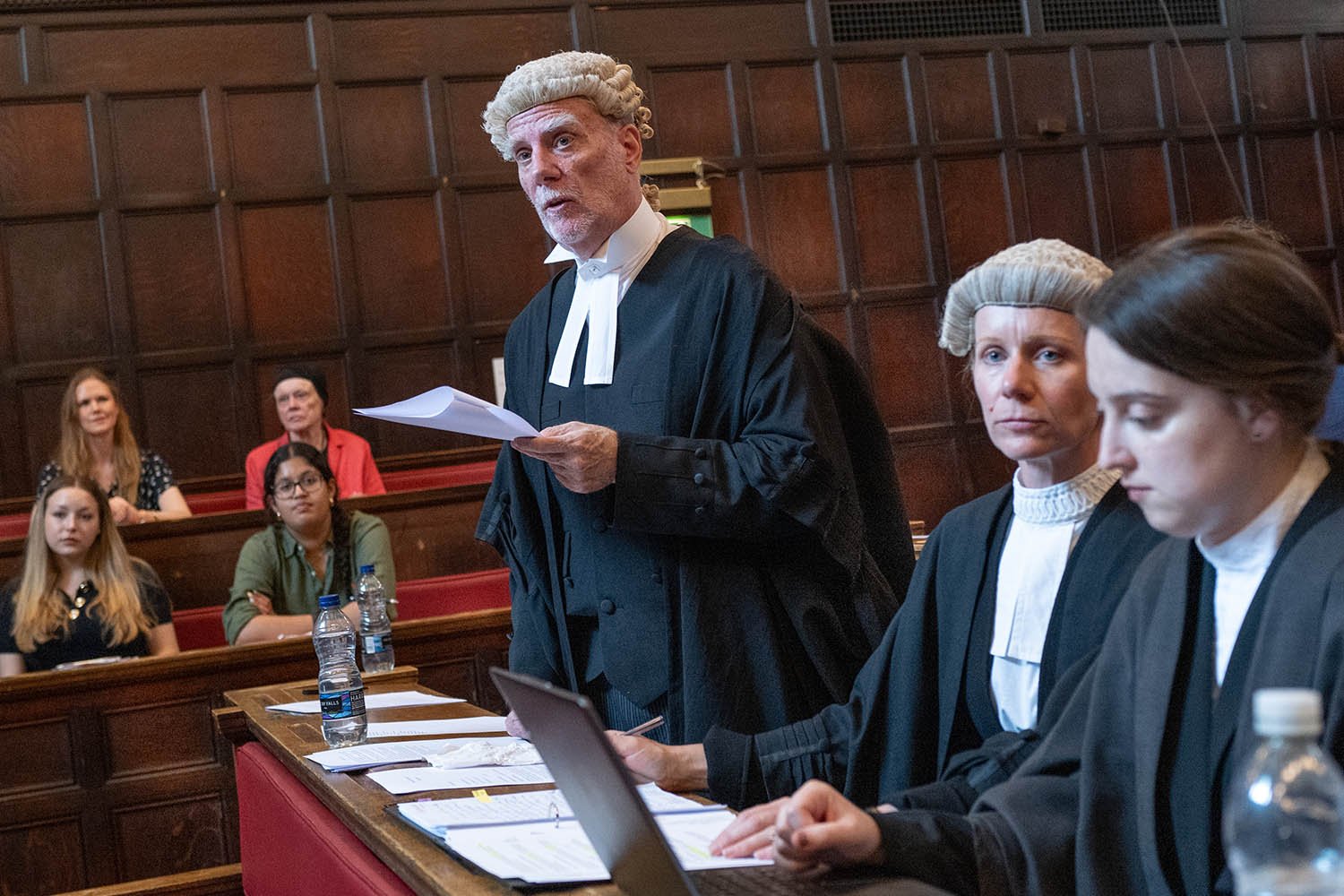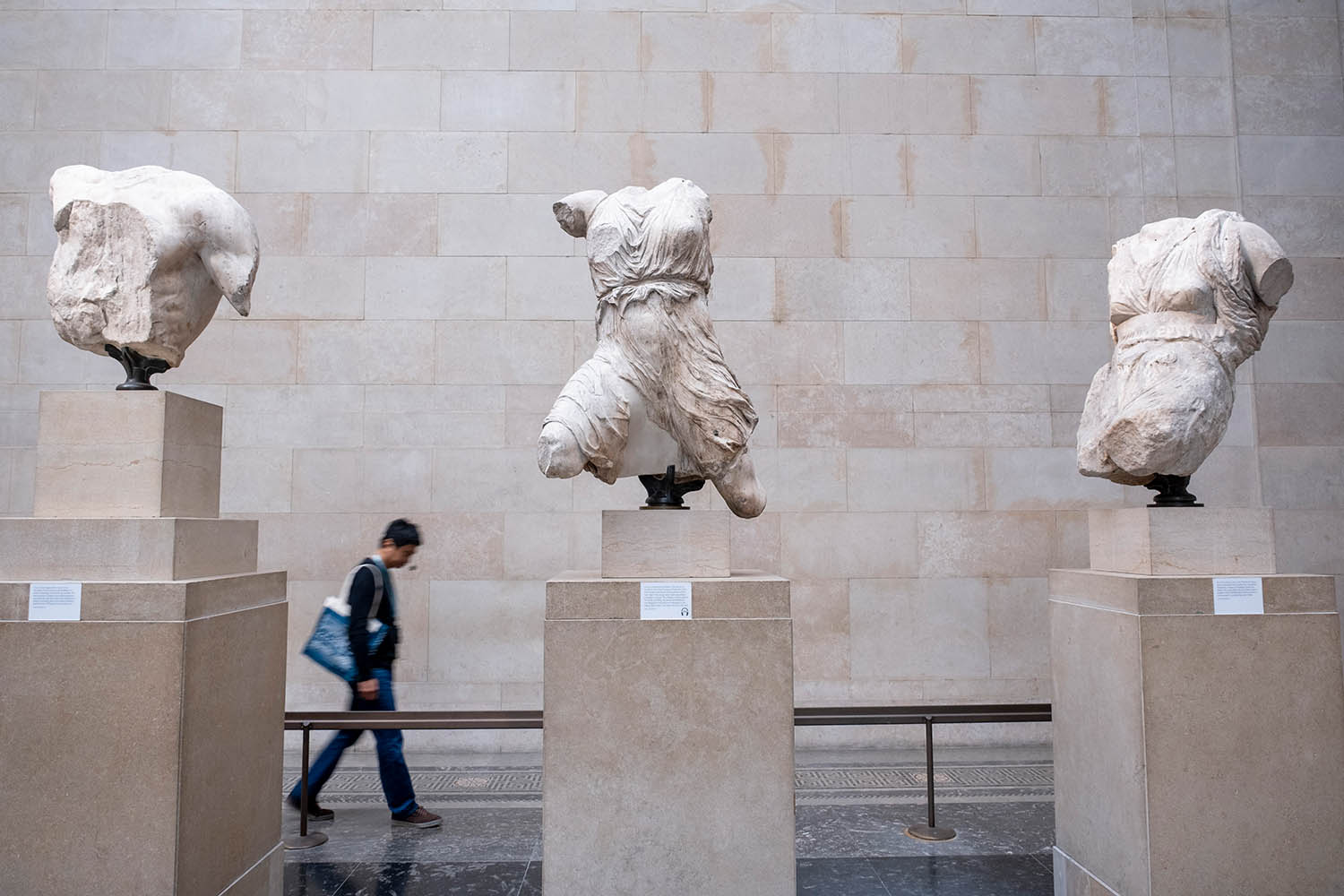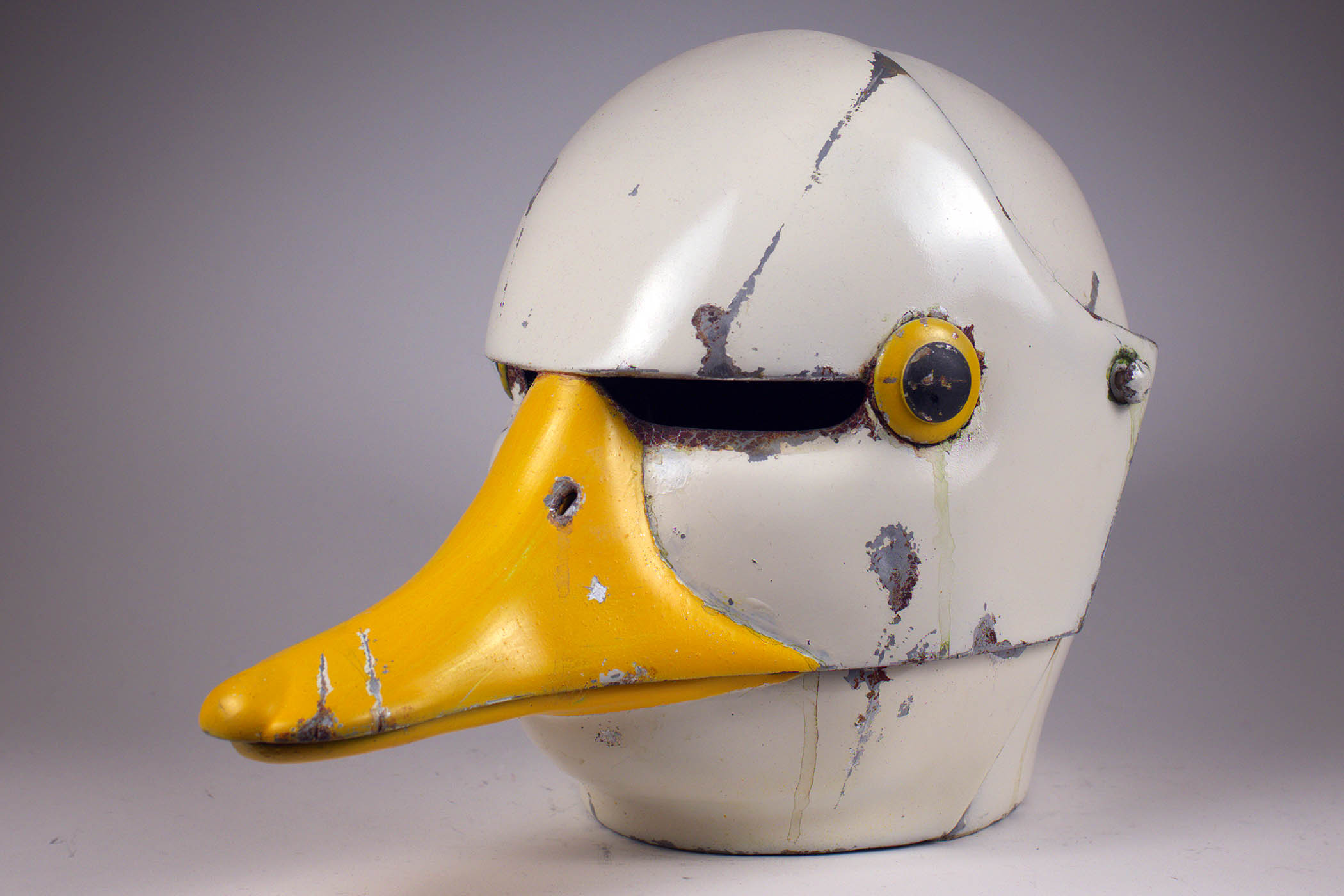
When ancient artefacts were stolen, evidence seemed to point in one direction. But the case has become more perplexing
In spite of its 21st-century popularity among London media exiles, Hastings is a place that is forever associated with events of the 11th century. The town’s long history is proudly displayed in a number of medieval-themed street names, and on one such street I recently found myself studying an unremarkable semi-detached red-brick house. Its owner, a former curator at the British Museum called Peter Higgs, has an interest in the past going back much further than the Norman conquests, which has left him with an uncertain future.
Almost two years ago, in August 2023, news broke that a series of thefts had taken place in the Greek and Roman collection of the British Museum. Higgs, who denies responsibility, had been sacked the previous month for gross misconduct. It also emerged that three years earlier the museum’s management had dismissed warnings of a thief in its midst.
That failure led to the resignations of the museum’s director, Hartwig Fischer, and his deputy, Jonathan Williams. I wrote about the scandal at the time, focusing on the shadowy trade in antiquities and the reputational effects on what is arguably the world’s most famous museum. In that piece I scarcely mentioned the alleged culprit, who has remained an elusive figure in the drama – but in the two years since then, Higgs’s alleged role and possible motivations have come to seem ever more puzzling
With a new director and revised security measures, the museum has been busy moving on from the scandal, while Higgs himself seems stuck in limbo between public allegation and the outcome of the investigation. It’s more than a year since the museum brought a civil case against him at the high court, in which it was claimed that during a period starting no later than 2009 and continuing until at least 2018 the curator stole more than 1,800 items from the strongroom of the Greek and Roman department. At the time, the chair of the trustees, George Osborne, perhaps prematurely, told the BBC that he was “100% certain we’ve got our man”.
Those legal proceedings, however, were stayed, prior to any defence being filed, and although the police investigation continues, no criminal action has been forthcoming against Higgs. Since his dismissal, Higgs, 58, has maintained a hermitic profile. He did not attend the court case and has not spoken publicly. Only one recent photograph of him has been published, taken outside his house a few weeks after his defenestration. He is wearing sunglasses and a short-sleeved shirt. The Daily Mail described him as looking “relaxed in the sunshine”, although in the image itself he appears hunched and haunted.
Related articles:
A few weeks before the photo was taken, Higgs’s then 21-year-old son Greg, apparently speaking on his father’s behalf, gave an interview to the Times in which he said Higgs senior was “devastated”. “He’s not done anything,” said the son. “It couldn’t have been [him]. I don’t think there is even anything missing as far as I am aware.”
According to papers presented at the high court, the day before that interview was published, bronze coins previously held in the Greek and Roman strongroom were seized by police in a raid on the Hastings home. Higgs was said in court by lawyers for the British Museum to be “suffering from severe mental health strain”. Meanwhile the story, like the man himself, has disappeared from public view, almost forgotten beneath subsequent news cycles.
The question I hoped to answer in Hastings was whether Higgs is waiting out the slow progress of the justice system, an inscrutable suspect with an archaeological sense of time, or if there is more to this matter than meets the eye.
What’s clear is that the passage of time has made the facts of the case only more perplexing. Among the missing gold jewellery and gems dating back 3,500 years and detailed in court particulars were pieces thought to be worth several thousand pounds each, but they were sold, often on eBay, for small amounts of money. In total it’s thought the sales realised no more than a £100,000.
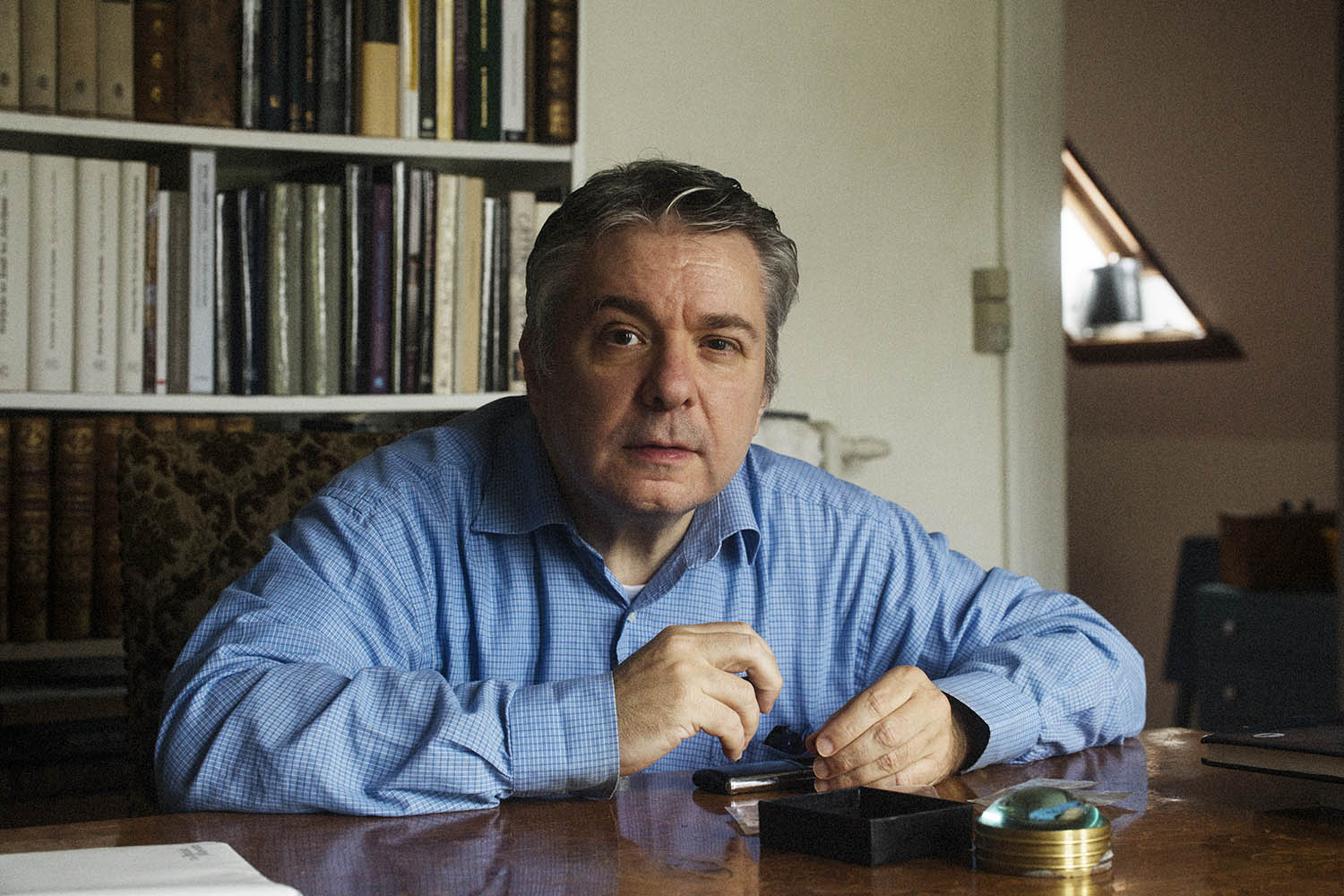
Ittai Grudel, the Danish antique gems dealer who first alerted the museum to the thefts nearly five years ago
Over the course of a decade or more that’s hardly a life-changing sum, even if curators are notoriously underpaid in this country. The modest house outside which I’m trying not to look like a prowling burglar does not resemble the purported home of a master criminal. So what might have motivated a respected professional to allegedly take such high risks for such low rewards? Why is the police investigation taking so long? How did the museum not notice the missing artefacts for so many years? And why did the thief, whoever it may be, make so little effort to cover his tracks?
To seek answers to these questions is to take a shovel to the solid rock of professional confidentiality. The curators, archaeologists and dealers I’ve contacted in recent months could speak of obsidian artefacts with the kind of ardour that the characters in the first Indiana Jones film talk of the ark of the covenant. But theirs is essentially a private passion, one in which outsiders are unwelcome.
One archaeologist replied to my inquiries saying that he was on an expedition in the Panamanian mountains and didn’t have anything to say. A retired curator said she was off on an archaeological trip to Egypt and couldn’t speak. It was as if Higgs’s friends and former colleagues had scattered to the four corners of the globe rather than discuss this awkward subject.
Reticence works in journalism the way rarity does in archaeology: it piques curiosity. And so my frustrated desire for answers began to resemble the collector’s pursuit of unobtainable antiquities, with each new unanswered email or call serving only to extend the search. Eventually after countless rejections, I managed to find the first person willing to speak, albeit anonymously.
They had worked with Higgs and were utterly mystified by the allegations. “It just seems so unlike him. He was a very helpful man. He knew his stuff and he was always very into the materials.”
Even this small detail jarred. The alleged thief disfigured many objects by removing them from their gold and silver mounts, which it is assumed were sold for scrap. It doesn’t sound like the handiwork of a seasoned professional.

Peter Higgs on the doorstep of his home in Hastings, Sussex
I had written many times to Higgs, seeking to establish what really took place in the bowels of the British Museum. But there came no reply. Would he perhaps speak in person?
A few weeks before I went to Hastings I had visited Tom Harrison, the keeper of the Greek and Roman department. Harrison was appointed to the post in early 2023, just as the museum was beginning to take stock, literally and figuratively, of the situation. The previous acting keeper had been Higgs.
We met in the department’s handsome old library, lined with books on Greek and Roman history and antiquities. The atmosphere was studious and Harrison spoke with careful precision about the museum and the efforts to retrieve the missing objects. So far 640 have been returned, more than half of them belonging to Ittai Gradel, the Danish antique gems dealer who first alerted the museum to the alleged thefts nearly five years ago.
For security reasons, Harrison said, he couldn’t show or even tell me the location of the strongroom from which the objects were removed. All he would allow was that it wasn’t in the basement.
The dimensions of the museum are not easy to conceive, which is one reason the alleged crime went undetected for so long. It’s not just the grand labyrinthine nature of Sir Robert Smirke’s neoclassical building in Bloomsbury, or its discrete areas of expertise, but also the monumental collection of eight million items, only a hundredth of which are ever on display. Several million are not fully catalogued, although that task has been accelerated since these allegations came to light. The missing pieces were largely unregistered items donated to the museum.
“There are storerooms all over the place, off staircases, in various locations,” Harrison says. Access to different parts of the museum is restricted to different staff members, depending on their rank and speciality. Harrison always carries a phone while walking from one place to another in case he becomes stuck between two security points. According to official protocol, access to the Greek and Roman department strongroom required two people to be present, although this rule seems to have been bypassed in these cases.
Talking to officials at the museum, though, is a bit like speaking to executives at the BBC: there is the same understandable desire to avoid controversy. Harrison is steadfast in his refusal to discuss Higgs or the facts of the case. Like the BBC, the British Museum carries the considerable weight of national status, a burden that has grown increasingly onerous in the era of postcolonial reassessment.
The museum’s argument in refusing to return the Parthenon marbles to Greece has always been that it provides the best care and protection of the exhibits for a global audience. But that is inevitably weakened when almost 2,000 items go missing from the very department responsible for the safekeeping of those marbles. As Despina Koutsoumba, head of the Association of Greek Archaeologists, said: “We want to tell the museum that they cannot any more say that Greek culture heritage is more protected in the British Museum.”
“You have to put it all in the context of the scale of what the museum is and does,” Sir Neil MacGregor, its former director, counters. The museum was rocked by the allegations but as an institution of 271 years standing, he suggests, it’s hard to gauge the long-term damage. “It’s extremely regrettable because it appears to be a fundamental breach of trust. But we’ll have to see how this looks in the perspective of 10 years.”
Exceptional bargains are uncommon but not unknown in the antiquities trade. The unworldly vendor is the dealer’s dream, and that dream came true on eBay for more than 40 buyers of the stolen objects, the most active of whom was Ittai Gradel.
A former antiquarian bookseller who switched to the gem business when he found it more profitable, Gradel noticed about 12 years ago on eBay a Roman Medusa cameo from the second century going for a mere £15. He immediately snapped it up.
“In a posh gallery the price would have been £4,000-£5,000,” Gradel told me when I met him earlier this year in a Notting Hill hotel. “Percentage-wise, it was the best buy I ever made.”
Gradel was annoyed with me about my original article, but he is an unusually open dealer, good-humoured and full of forthright opinions, which he voices in precise and emphatic English. He thinks Osborne should also resign for protecting Fischer and Williams long after their mistakes became apparent. (In his defence, Osborne got the investigation moving and oversaw the appointment of the new director, Nicholas Cullinan, as well as the commission of a security review.)
One source from within the museum suggested that for years the curator felt overshadowed by a more brilliant senior colleague
Like a number of dealers, Gradel is irritated by the moral distinction drawn in the world of antiquities between curation and trade. The belief that museums represent the antithesis of the marketplace has led to the misapprehension, says Gradel, that curators know more about the items they display than dealers do about the objects they buy and sell. He says the reverse is often true.
In my original article I had quoted an expert on illicit antiquities who argued that, because of the lack of provenance, the trade was awash with stolen goods. Gradel was not impressed. “The category of unprovenanced objects is totally meaningless,” he told me, pointing out that while there may be pieces illegally excavated in Syria, there are also gems without provenance that have been around for generations, and they are perfectly legitimate. But what had really riled him was my suggestion in the same piece that many dealers were content not to probe dubious cover stories provided by sellers.
The eBay seller Gradel dealt with went by the name of Sultan1966, but Gradel soon learned that he was called Paul Higgins and that the pieces he was selling reportedly came from his grandfather who had owned a junk shop in York.
“I went into the English public records and his grandfather existed,” Gradel explained. “So as far as I could check up on this, I felt reassured.”
Nonetheless the name did ring an alarm bell because Gradel had previously been involved in some other gem acquisitions that were conducted via another dealer, Rolf von Kiaer. Von Kiaer had acted for an old man also apparently called Paul Higgins whose grandfather had also supposedly left him a collection of ancient gems. When Von Kiaer suggested meeting Higgins in person, he was told by his son Simon that the old man had died.
The dealer admits that he found it “remarkable” that both sellers had the same name, and he asked the Sultan1966 Higgins if he knew or was related to the deceased Higgins. He replied saying he’d never heard of him, but agreed that it was a “strange coincidence”.
But what are the chances of two people named Paul Higgins selling at throwaway prices ancient gems left to them by their grandfathers? Vanishingly small, you’d imagine, and Gradel did have his suspicions, yet it seems they were reserved for the dead Higgins. Having failed to find any record of this man’s grandfather, Gradel wrote to curators at the British Museum – among them Peter Higgs – expressing his concerns. “But I never got a reply,” he says with a wry smile.
He thinks the letter provided a warning, leading the seller to switch tactics. “After that he went away from acting through a middleman and progressed to selling directly on eBay,” he says.
The transactional relationship between Gradel and Sultan1966 might have carried on indefinitely had the seller not made a wrong move in 2016. He placed on eBay a fragment of a sardonyx Roman cameo and then quickly removed it from the site, but not before Gradel took a screenshot of the image.
Unlike the other Sultan1966 pieces Gradel had seen, this one had appeared on the British Museum website, although it is alleged that the vendor had contrived to remove it from the digital records. But four years later, owing to what Gradel calls “some glitch in the program”, the image temporarily returned to the museum’s website, where the Dane happened to see it and make the comparison to the screenshot he had previously taken.
The investigation into these matters will have to take into account the following allegations. Gradel insists he had also been consulted about a greenstone fragment in the possession of a dealer named Malcolm Hay, who’d bought it from Sultan1966. Gradel saw a photo of the same fragment in a book by a Polish gem specialist. The image had been taken from a 1926 British Museum catalogue.
What mattered to Gradel was that the catalogue proved Hay’s cameo rightfully belonged to the British Museum. Now, perhaps a little late in the day, he reviewed Paul Higgins’s correspondence and noticed that the name on his PayPal account was Peter Higgs. He mentioned it to his friend Von Kiaer, who reminded him that this was the name of a curator at the British Museum.
Further research showed that this Higgs’s Twitter handle was sultan1966, and Paul Higgins’ email was bodrum1966@gmail.com – Higgs had published a book with the subtitle Hellenistic Sculptures from Bodrum and he was born in 1966. No one has a good explanation for these facts. Higgs had helped out on at least one police inquiry into stolen antiquities – he was not naive or stupid.
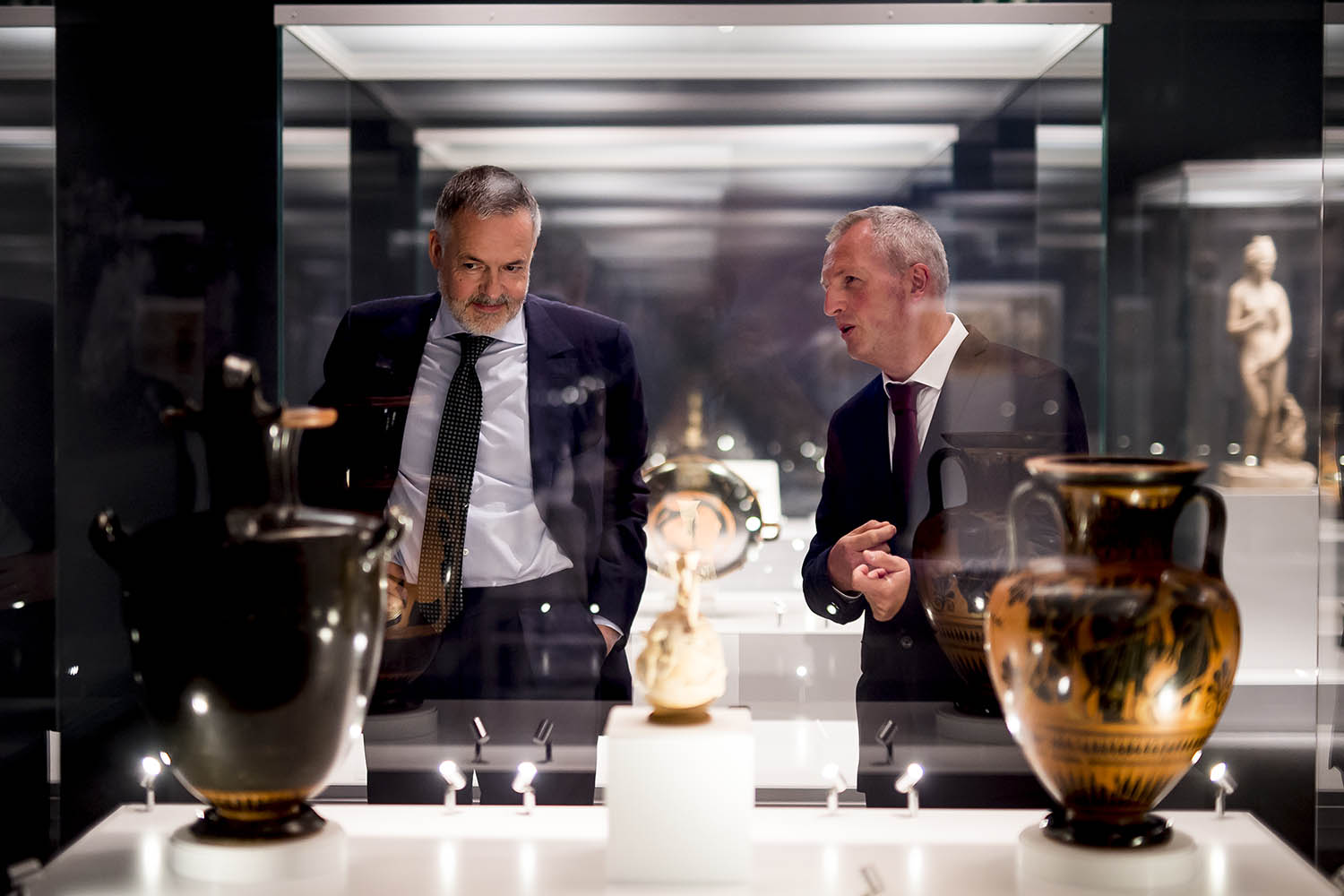
Former British museum director Hartwig Fischer and Peter Higgs
Gradel shared his suspicions with several people. First, the Rev Martin Henig, one of the world’s leading ancient gem experts, who concluded that the pieces did indeed come from the British Museum’s collection. Then Hay, who took his greenstone along to Williams in the eerily deserted British Museum in November 2020 during the pandemic, where he says he was hastily ushered out with bland assurances.
Hay makes Gradel seem like a paragon of diplomatic restraint when it comes to his opinion of curators and archaeologists. He wrote me an irate email in which he railed against their “political bias” and claimed that the thefts would never come to criminal court. “I am personally convinced that orders have been given higher up – the ministry of culture perhaps – that this episode is to go to sleep,” he wrote, concluding that the only possible interpretation was “that the BM and the ministry don’t want to exacerbate the Elgin marbles situation”. Gradel also informed Dorothy King, an archaeologist and friend of Higgs.
Impatient with the lack of action following Hay’s visit, Gradel wrote to Williams in February 2021 detailing all his evidence and received a brief email assuring him that the museum would “look into the matter”. Three months later, having heard nothing, he wrote again, expressing his disbelief in characteristically sardonic style.
What are the chances of two people named Paul Higgins selling at throwaway prices ancient gems left to them by their grandfathers?
“Peter Higgs is now, I notice, acting keeper: as I understand the titles, that is head of the entire Greece and Rome department in the BM? So, far from being suspended, he has in fact been promoted.”
More silence, so a month later he wrote to the director, Fischer, which prompted Williams to reply: “I can confirm that the museum has conducted a thorough investigation, including scientific examination, which found that the objects concerned are all accounted for and with no suggestion of any wrongdoing on behalf of any member of museum staff.”
Gradel shakes his head at that memory. “We are far beyond mere incompetence here,” he says. It seems that Williams did speak to Higgs, but Higgs had been forewarned by King, who believed her friend was being unfairly “set up”. Higgs duly shared King’s email with Williams, who appears to have trusted his colleague’s reassurances. Williams has not spoken on the subject since he left museum.
It was only Gradel’s persistence in writing to Osborne that finally set things in motion. The museum has expressed its gratitude to the Dane, but is also keen to point out that an audit that was simultaneously taking place would have unearthed the missing objects.
“Ittai has been very helpful and collaborative,” Harrison told me. “But as I’ve said to him, he knows one side of the story but he doesn’t know what happened internally.” That, of course, is the key question.
In this excavation it’s hard to distinguish facts from rumours. I heard competing explanations for Higgs’s alleged motivation, neither of which it is possible to verify. One source from within the museum suggested to me that for many years the curator felt overshadowed by a more brilliant senior colleague, and had become embittered about the attention he drew. Others say the resentment was real but it stemmed from an incident on a dig some years before in which – Higgs is said to have told his friends – he was the victim of an unpleasant encounter involving the same senior colleague. Higgs has never said anything publicly to support either suggestion.
The museum source says that the latter story had surfaced within the Greek and Roman department but there was never an official complaint and no evidence was put forward to support it. Dorothy King tells me she was aware that the curator was deeply upset.
“Nobody should have to deal with what Peter Higgs was put through in the early 2000s,” she says. “The British Museum has a duty of care to its employees, and it failed him in a way that many of us considered abhorrent.” Without Higgs’s own testament, however, it’s only speculation. What is known is that the curator entered the Greek and Roman strongroom alone at least 24 times between 2014 and 2023, because records are kept of who turned the alarm off and when. A number of these visits allegedly coincide with the appearance of the missing items online.
Who can explain the nature and purpose of those visits?
I knocked on Higgs’s door several times during the course of a long Friday afternoon in Hastings last month. It’s almost two years since he was sacked and there are no signs that charges are imminent, and nor has he accounted for his alleged actions. The Metropolitan police tell me that there are “no updates” on the investigation.
From Higgs’s house there was also no answer, and I could hear no movement. The house showed signs of disrepair though: scaffolding was up and a builder at work. A man from the street tells me that he thinks Higgs is at home, but all curtains are drawn, a scene that is as mournfully opaque as the motivations of the occupant possibly within.
Each time I walked back to my parked car to wait I had the sense of being watched, though it was almost certainly my imagination. I went away for a few hours but on my return, it was the same result. My dig for answers had reached an impenetrable bottom. The truth remained enticingly out of reach.
As the afternoon shaded into evening, I reluctantly decided to head home. “He’s a very nice man,” said a woman, tending to her front yard a few doors away, and added with staunch neighbourly approval: “He keeps himself to himself.”
Photographs by Dominika Zarzycka/Getty Images, David McHugh/Brighton Pictures, Felix Odell, Samuel de Roman/Getty Images


